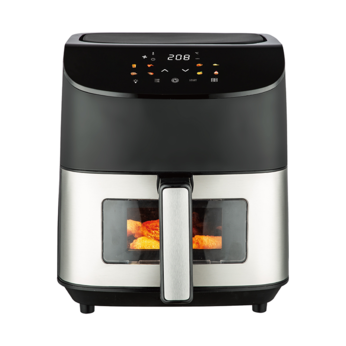The motor is one of the most critical components in ensuring that the 3 in 1 Food Processor performs consistently across multiple tasks. A high-performance motor provides the necessary power to handle a range of ingredients, from soft fruits to hard vegetables and even dense doughs. Many advanced models come with multiple speed settings and a pulse function, allowing users to customize the motor speed for different tasks. For example, chopping may require slower speeds for controlled cuts, while blending smooth ingredients calls for a higher speed. This flexibility in motor control ensures that users get consistent results, whether they’re finely chopping onions or creating a smooth, lump-free puree, all without the need for manual adjustments. The motor’s power is also crucial for handling tough ingredients, ensuring that even hard-to-process items, such as root vegetables or tough meats, are handled without overworking the motor or requiring additional effort from the user.
Most 3 in 1 Food Processors come equipped with pre-programmed functions designed to automate specific tasks. These settings are engineered to optimize the processor for particular functions such as chopping, kneading, blending, or slicing. For example, a "chop" setting might adjust the motor speed and pulse frequency to ensure that vegetables are chopped evenly without turning them into mush. Likewise, the "knead" setting might activate a slower, more consistent mixing motion to ensure the dough is smooth and well-mixed without overworking the gluten. The beauty of these pre-programmed functions is that they automatically adjust speed, time, and power, so users can achieve perfect results without having to fine-tune the process themselves. This automation makes it easy for both novice and expert cooks to consistently achieve professional-level results with minimal effort, eliminating the guesswork associated with manual adjustments.
Some modern 3 in 1 Food Processors are equipped with smart sensors that can detect the load and type of ingredients being processed. These sensors can adjust the motor’s speed and power to accommodate tougher ingredients or heavier loads. For example, when blending a smoothie, the processor can sense if the ingredients are softer and adjust the motor’s speed for a smooth blend. However, when grinding a batch of nuts or chopping dense vegetables, the sensors will detect the increased resistance and boost the motor’s power to maintain optimal performance. This technology ensures that the processor delivers consistently high-quality results regardless of ingredient type or quantity. By automatically making these adjustments, the processor prevents users from needing to manually intervene or adjust settings, ensuring that the machine works optimally without the risk of uneven processing.
The 3 in 1 Food Processor comes with multiple specialized attachments designed for specific tasks such as chopping, blending, and kneading. These attachments are engineered for precision, allowing the processor to deliver consistent results. For instance, the chopping blades are designed with sharp, high-quality stainless steel to ensure even cuts every time. A blending attachment is shaped to provide maximum surface area for smooth blending, ensuring that the ingredients are blended to the desired consistency without lumps. Similarly, the kneading attachment, typically a dough hook or paddle, is specifically built to mimic the kneading motion of hand mixing, ensuring that dough is mixed evenly without overworking or under-mixing. These precision-engineered blades and attachments ensure that each function is carried out optimally and consistently, allowing users to move seamlessly between different food preparation tasks with minimal effort and no manual adjustments.
The design of the 3 in 1 Food Processor ensures that ingredients are evenly distributed during the processing cycle, which is critical for achieving consistent results. Whether chopping, blending, or kneading, the bowl of the processor is designed to allow ingredients to move in a way that ensures uniform processing. In many models, the blades or mixing paddles are specifically positioned to pull food toward the center of the bowl, ensuring an even cut, blend, or mix. This even distribution eliminates the need for users to stop the machine mid-cycle to redistribute the ingredients, which is often necessary in traditional, less optimized designs. For example, when chopping vegetables, the processor’s design ensures that the entire batch is processed uniformly, with no oversized chunks or uneven cuts. Similarly, when blending smoothies, the ingredients are evenly circulated, preventing the buildup of unprocessed ingredients along the side of the bowl.


 English
English 中文简体
中文简体 English
English 中文简体
中文简体
















